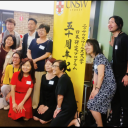第92回「よろしくお願いします」って何?
What is Yoroshiku onegai-shimasu?
日本人には常識でも、文化の違うオージーにはイマイチ伝えづらい…。
そんな時にぴったりの表現や話の流れをご紹介。
(文:池田俊一 オーストラリア国立大学アジア・太平洋カレッジ日本センター 協力:池田澪奈)
エピソード
ビジネス・メールの最後に「よろしくお願いします」と書いてあったけど、これってどういう意味?
Aussie: I thought that よろしくお願いします (yoroshiku onegai-shimasu) was only used when you first introduce yourself to someone, but I’ve already met this person who sent me this email?
You: Ah, yes. Well, you’re not wrong that it’s a phrase which gets used as a greeting. When it’s used as a greeting, the meaning is similar to “nice to meet you” – as you know – and you would use it when you meet someone for the first time. However, this phrase is also quite situational, and there are other times you can use よろしくお願いします. For example, it can be written at the end of a business email like in your case, to roughly mean “we will be in contact from now, so hopefully future interactions can be good”.
Aussie: Oh! Well that’s suddenly a little bit longer in meaning. Although, I can see how the same phrase would still apply, as you are essentially saying the above within ‘nice to meet you’, as well.
You: That’s right. You can also opt for the more polite 敬語 (keigo) form and say よろしくお願いいたします (yoroshiku onega i-itashi-masu), or even further, よろしくお願い申し上げます (yoroshiku onegai-mooshi-agemasu), too.
Aussie: You said there are other times this phrase can be used; do you have one other example, so that I could maybe get my head around it?
You: Sure. よろしくお願いします can also be used by the teacher / students, say, before a lesson is about to begin. This context gives the phrase another dimension in meaning, and that is encouragement (‘let’s work hard together’) and gratitude (‘thank you for your valuable time’).
By experiencing more of these situations, the more you’ll be able to come to understand the feelings behind them.
説明する時のポイント
「よろしくお願いします」の「よろしく」は、「よろしい」という形容詞の副詞形で、元々は「いい/良い」という意味の改まった言い方だと教えてあげよう。しかし、多くの慣用表現と同様に、元の意味は薄れ、誰かに何かをお願いする(頼む)時にこの言葉を添えることによって「どのような助力でもありがたく受け取らせて頂く」という気持ちを表すのに使われる、と説明を加えておこう。ついでに、初対面の人に対する挨拶で「これからも良い付き合いが続くことを願っている」という気持ちを表す「どうぞよろしく」や、話している相手と別れる時、その場にいない人に対して「自分が気遣っていることを伝えて欲しい」という依頼をする時の「よろしく伝えてください」という使い方にも触れておくといいかもしれない。
【単語・成句】
situational 場合/状況によって違う
be in contact 連絡し合う
interaction(s) 交流/交信
essentially 基本的には/本質的には
opt for 選ぶ/使う
get my head around it よりよく理解する/感覚がつかめる
is about to ~ もう少しで~する(ところ)
dimension 面/局面
encouragement 励まし/激励
gratitude 感謝の気持ち
behind them (= situations) 状況の裏にある/隠されている
【会話文で使える表現】
“you are not wrong”という表現は、文字通りは「(あなたは)間違っていない」という意味だが、会話では、軽い気持ちで「そうそう/その通り/そういうことだ」と肯定する時に使われる。
【例1】”Trump and Morrison seem to have struck a chord.” “Yep, you’re not wrong. They say they’re ‘in a titanium relationship’.”
「トランプとモリソンは、意気投合したようだね」「うん、その通り。2人共、チタニウム関係と言っているほどだ」
【例2】”Did I say something wrong?” “Well, you’re not wrong, but I guess you could have worded it a bit differently.”
「私、何か悪いこと言った?」「いや、別に間違ってはいないけど、違う言い方はできたかも」
【例3】”The Rugby World Cup in Japan has been beyond expectation.” “You’re not wrong, I think it has set a new standard.”
「日本開催のラグビー・ワールド杯は期待以上のものになったね」「確かに。ハードルを上げた気もするよ」











